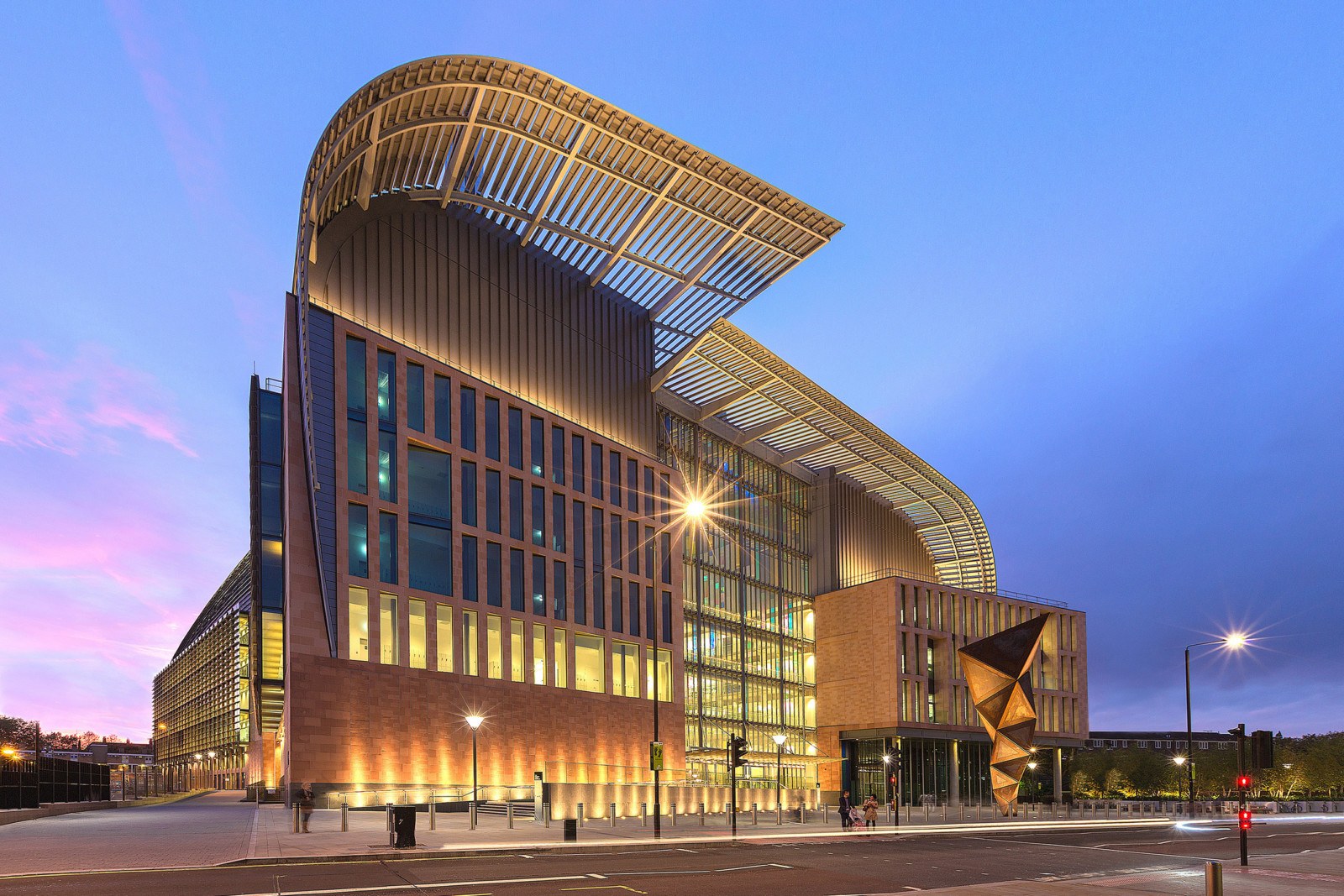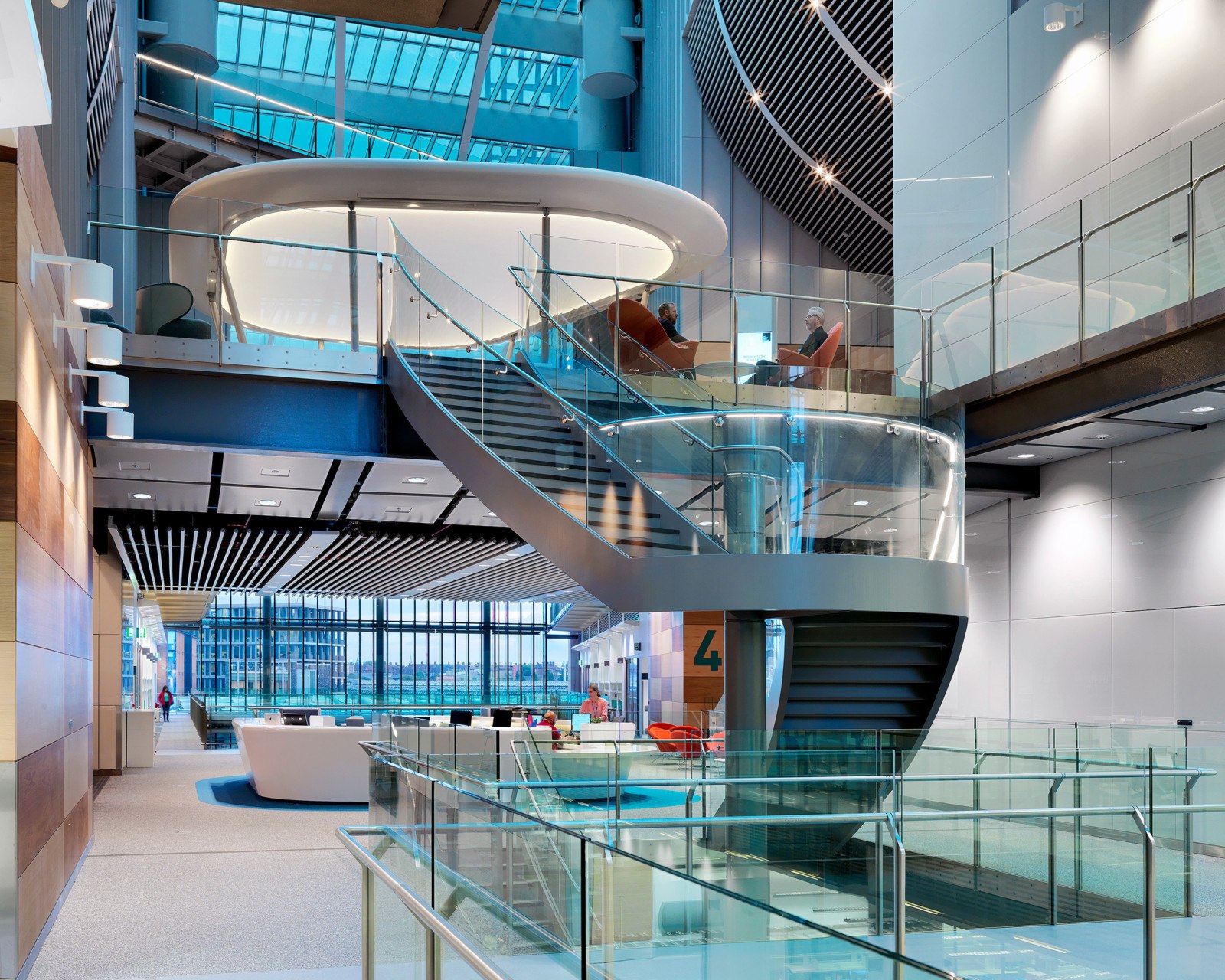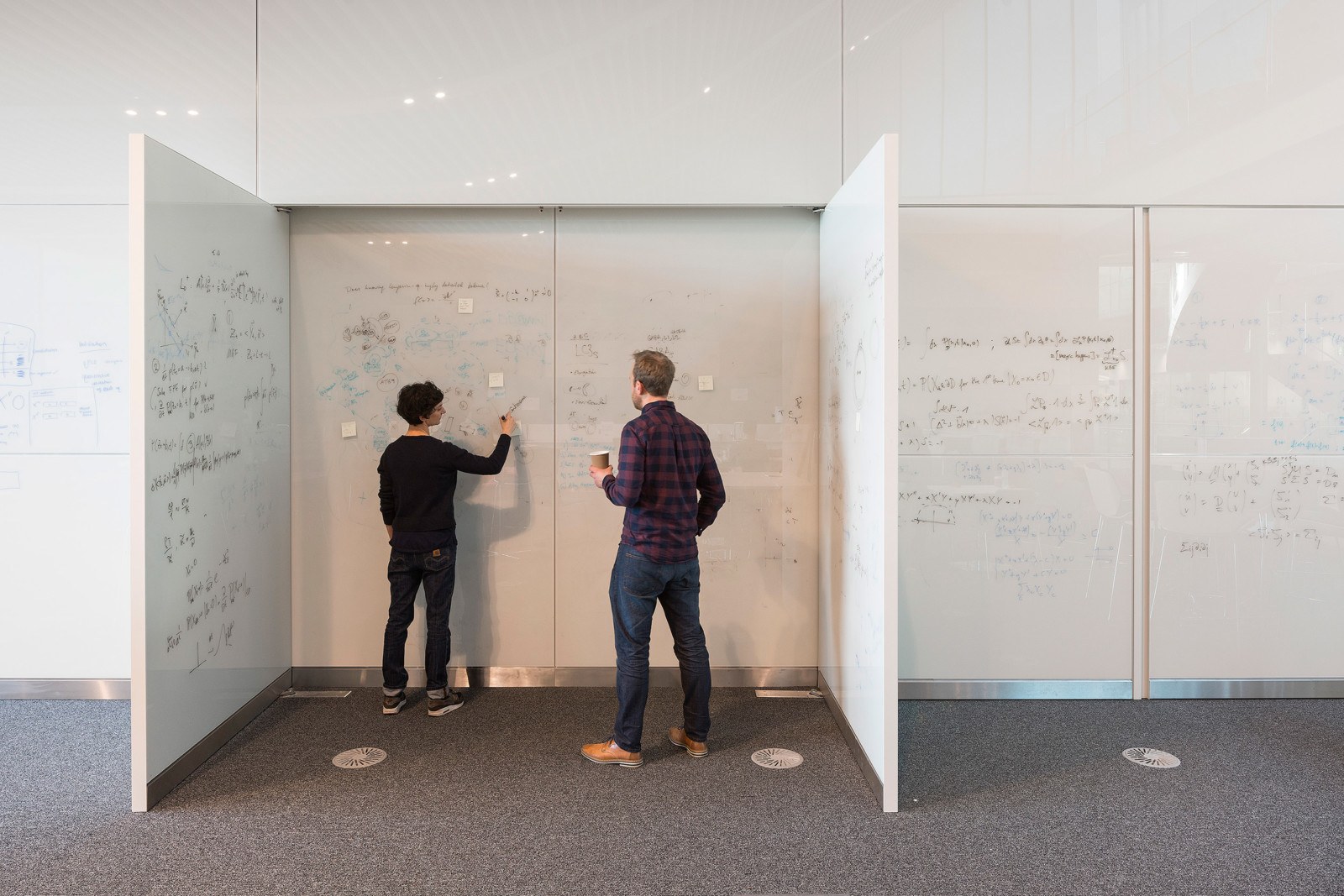Imagine a research center without hierarchy or departmental divisions. A place with open doors for impromptu conversations and idea sharing. An environment where collaboration trumps competition and where the work of one researcher is intimately connected to that of her peers.
That’s the idea behind the Francis Crick Institute, a first-of-its-kind biomedical and translational research center in the heart of London.
The Crick brings together 1,500 of Europe’s brightest minds from six different organizations to solve the world’s most vexing scientific problems. Shortly after it opened, R&D Magazine honored the Crick as the world’s “Lab of the Year.”
"A fantastic state-of-the-art new home for the Crick has been built ... it will be the discoveries we make here that cement our place in London, in the UK and at the forefront of science worldwide.” — Sir Paul Nurse , Director of the Francis Crick Institute
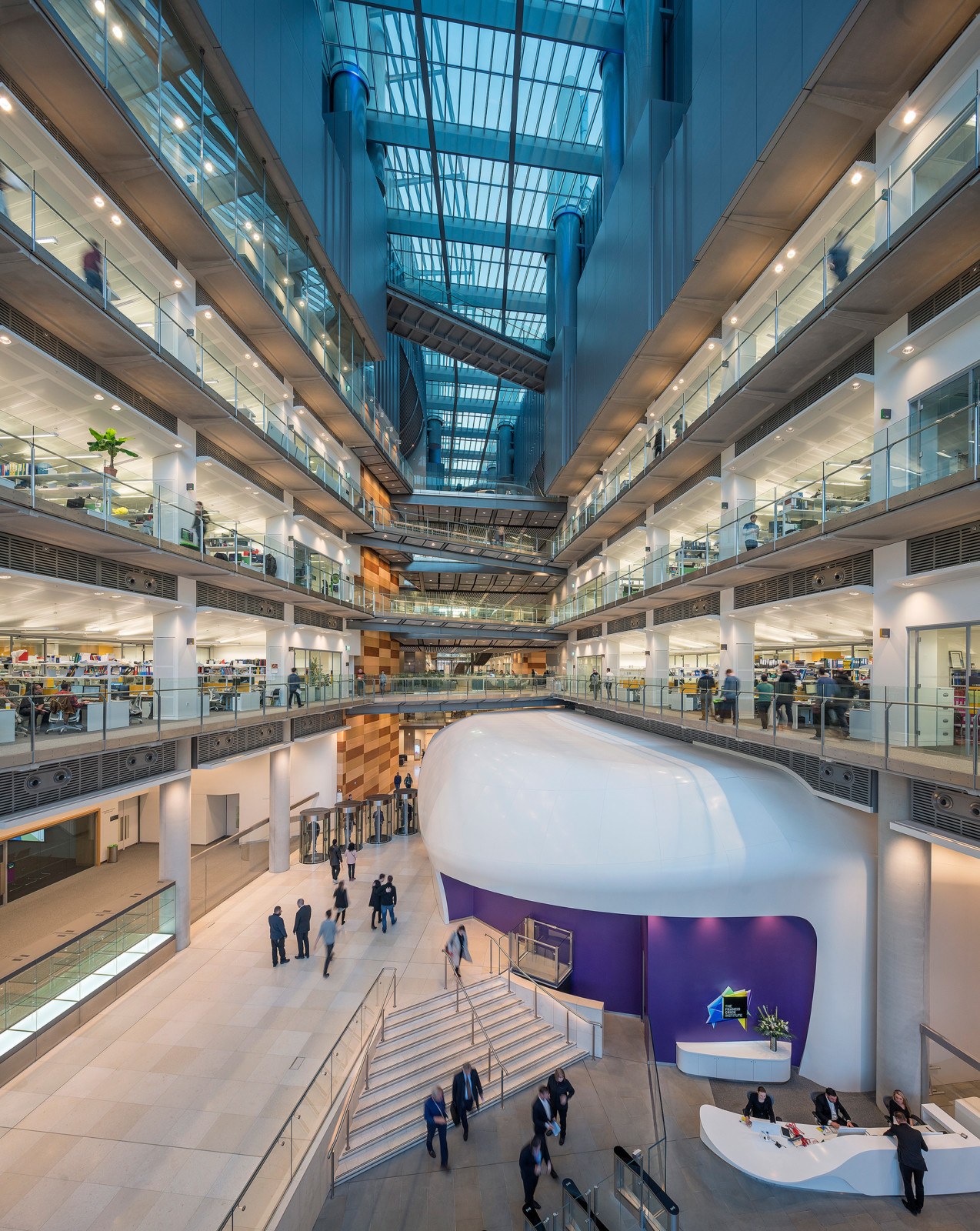
Daylighting and Open Space
Visitors are immediately struck by the abundance of natural light streaming in from the four-story atrium that runs the entire east-west length of the building. This atrium, along with a smaller north-south atrium, lends the Crick an open, transparent feel that also provides views and connections to all four lab neighborhoods within this nearly 1 million-sq.-ft. structure.
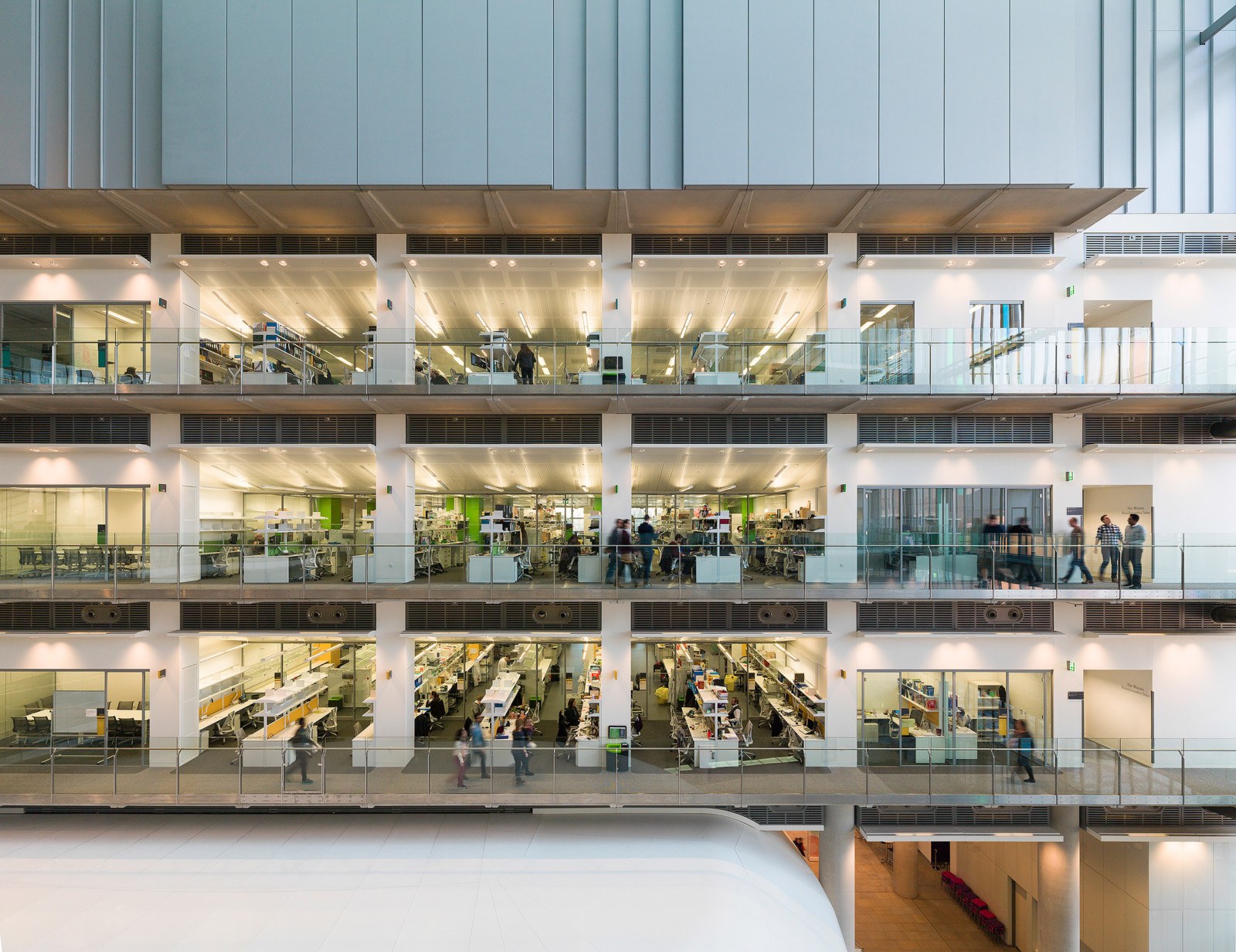
Science on Display
The Crick’s neighborhood layout further promotes transparency with glass-walled labs and open write-up areas around the perimeter of the main atrium. Researchers and scientists from the center’s 120 labs can easily observe each other and share ideas.
Myriad Collaboration Areas
Located in the center of London’s scientific community, the Crick has become a hub for both formal and spontaneous gatherings. Colorful breakout spaces on each floor facilitate chance meetings. An open stair in the central atrium leads to informal meeting areas where researchers gather for planned or serendipitous meetings. Mobile, double-sided white boards encourage impromptu brainstorming and sharing.
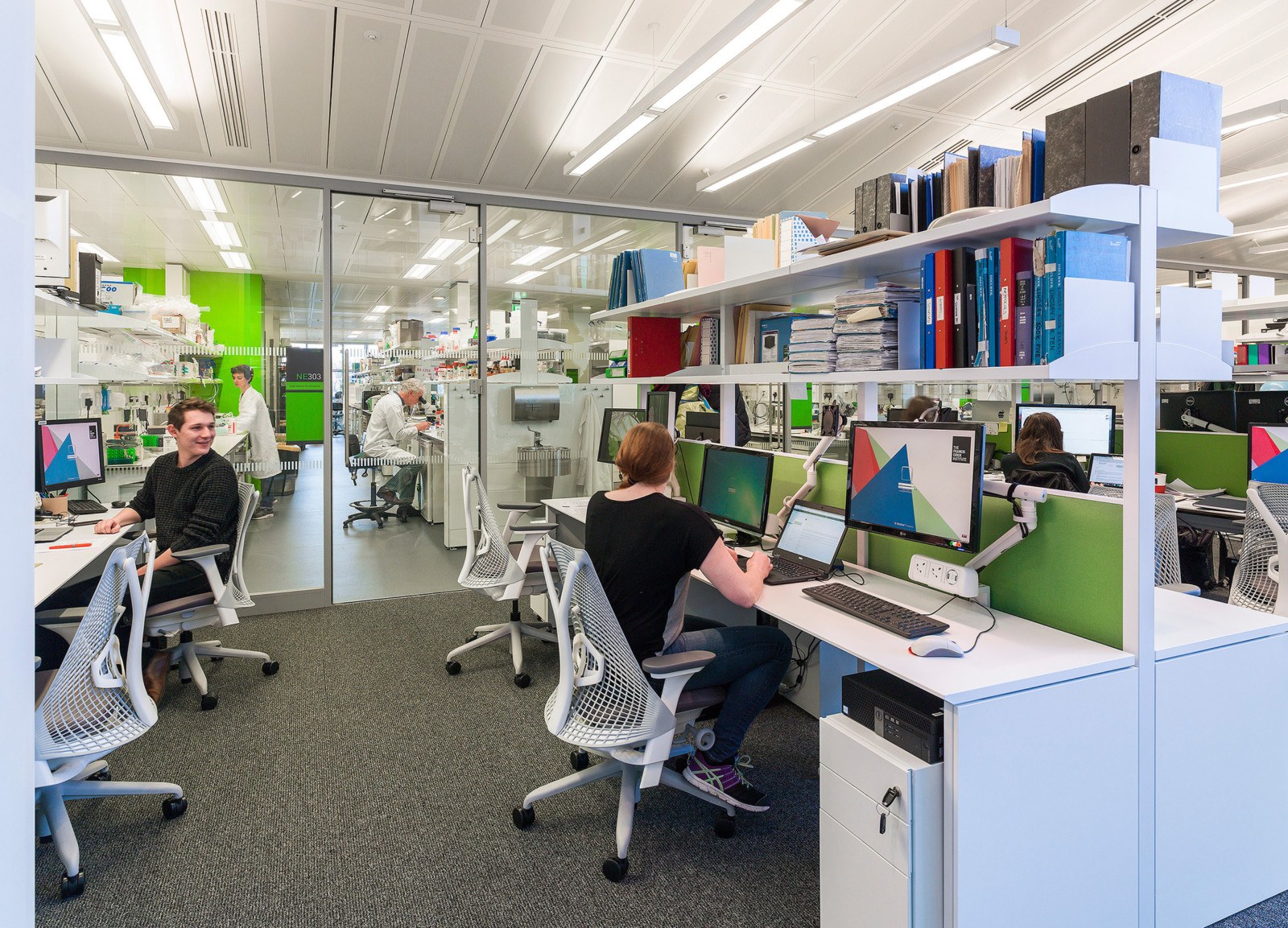
Ultraflexible
Because science is constantly changing, virtually everything in each lab is movable and can be rearranged in just hours to allow researchers to pivot in response to their findings, collaboration needs and rapid changes in research.
PLP collaborated with HOK in shaping the building’s distinctive form and architectural expression.
Activating the "hive mind" at the Francis Crick Institute.
A Healthy Research Environment
Setting a new standard for modern sustainable design, the building earned a BREEAM (Building Research Establishment Environmental Assessment Method) Excellent rating.
In accordance with the London Plan to fight climate change, the team followed a tiered “be lean, be clean, be green” approach to carbon reduction. The building is designed to save approximately 35,000 tons of carbon dioxide per year, with a 25 percent reduction in carbon emissions compared to a conventional design.
The team designed each facade to consider the environmental impact of orientation and to minimize solar heat gain while maximizing daylight. The building is largely daylit, with views to the outside for almost everyone.
More than 18,000 square feet of solar panels installed in the south-facing roof generate renewable energy. Wild roof ‘gardens’ attract wildlife while insulating the building.
